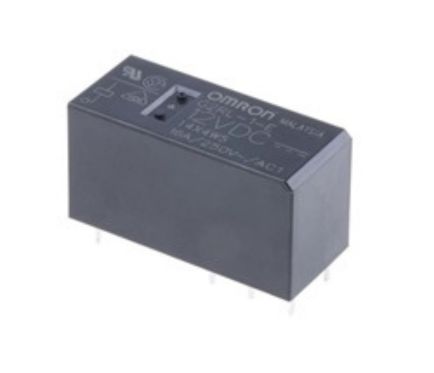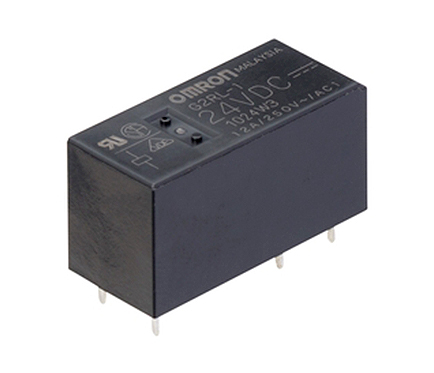General-purpose relay models play a crucial role in various industries and applications, serving as the backbone of electrical control systems. These versatile devices are designed to efficiently switch electrical circuits on and off, making them indispensable components in countless devices and machinery. Understanding the importance of general-purpose relay models and their specifications is key to selecting the right relay for specific requirements and ensuring optimal performance.
This blog will walk you through the nitty-gritty of relay specifications, covering important parameters such as input and output characteristics, contact ratings, coil specifications, and more. This detailed breakdown will enable you to evaluate and compare different relay models accurately, ensuring compatibility and optimal performance within your electrical system.
Also, we will explore advanced functionalities and innovative features that the ultimate general-purpose relay model brings to the table. These advancements not only enhance the relay’s performance but also expand its applications, allowing you to tackle complex control tasks with greater efficiency and reliability.
Best Offer Available
What are general-purpose relays and how do they function?
General-purpose relays are electromechanical devices that serve as essential components in various electrical systems. These relays are designed to control the flow of electrical current by opening or closing circuits in response to specific conditions or signals. They are commonly used for switching and control purposes, providing a reliable and efficient solution for a wide range of applications.
The basic functionality of a general-purpose relay involves an electromagnet and a set of contacts. When a current passes through the coil of the electromagnet, it generates a magnetic field that attracts or repels a movable armature. This armature, in turn, causes the contacts to either close or open, allowing or interrupting the flow of electricity in the controlled circuit.
What are the common applications of general-purpose relays?
General-purpose relays find extensive use in numerous industries and applications due to their versatility and reliability. Some of the common areas where these relays play a crucial role include:
1. Industrial Automation
General-purpose relays (ADW1103HLW)are widely employed in industrial automation systems to control various devices, such as motors, pumps, fans, and solenoids. They provide a cost-effective solution for managing and switching electrical loads in factories, manufacturing plants, and process control systems.
2. HVAC (Heating, Ventilation, and Air Conditioning)
General-purpose relays are integral to HVAC systems for controlling heating and cooling elements, motors, and compressor units. These relays ensure the precise and efficient operation of HVAC equipment, contributing to energy savings and climate control.
3. Lighting Control
In lighting applications, general-purpose relays are used to manage the switching of lighting fixtures, including indoor and outdoor lighting systems. They facilitate manual or automated control of lighting circuits, enabling energy-efficient operation and customization of lighting setups.
4. Home Automation
General-purpose relays form the backbone of home automation systems, enabling control over various electrical devices and appliances. They allow homeowners to remotely operate lights, security systems, garage doors, and other home automation components.
5. Automotive Systems
General-purpose relays are utilized in automotive applications to control different electrical functions such as headlights, wipers, windows, and door locks. They ensure reliable switching and protection of circuits in vehicles, enhancing overall performance and safety.
6. Renewable Energy Systems
General-purpose relays are essential components in renewable energy systems, including solar power and wind turbines. They facilitate the management and distribution of electrical power generated by these systems, ensuring efficient utilization and protection against overloads.
Key Features of the General Purpose Relay Model
The ultimate general-purpose relay model stands out from the rest due to its exceptional key features, which make it a reliable and versatile choice for various applications. Here are its key features in more detail:
- High-quality Construction and Durability
The ultimate general-purpose relay model boasts a superior construction that guarantees durability and longevity. It is meticulously engineered using top-quality materials, ensuring it can withstand harsh operating conditions and frequent use without compromising its performance.
2. Versatility and Compatibility with Various Systems
One of the standout qualities of the ultimate general-purpose relay model is its remarkable versatility. It is designed to seamlessly integrate with a wide range of systems, making it a suitable choice for diverse applications.
3. Enhanced Performance and Reliability
The ultimate general-purpose relay model takes performance and reliability to new heights. Equipped with advanced technology and precision components, it delivers exceptional performance in terms of response time, signal accuracy, and switching capabilities.
What are the common specifications of a general relay model?
When it comes to selecting the ultimate general-purpose relay model, having a clear understanding of its detailed specifications is crucial. Let’s explore the various aspects that make up these specifications, allowing you to make an informed decision for your specific requirements.
1. Input and Output Parameters
The input and output parameters of a general-purpose relay are essential to know to ensure compatibility with your system. These parameters include the voltage and current ratings for both the input control signal and the output load. It is important to match the relay’s input parameters with your control circuitry to ensure proper operation.
2. Contact Ratings and Switching Capacity
Contact ratings and switching capacity indicate the maximum load that the relay can handle. This information is vital to determine whether the relay can safely handle the electrical current and voltage levels required for your application. Contact ratings typically include details such as the maximum current and voltage ratings for both resistive and inductive loads.
3. Coil Characteristics and Power Requirements
Understanding the coil characteristics and power requirements of a general-purpose relay is crucial for proper integration into your system. Coil characteristics include parameters such as coil voltage and coil resistance, which dictate the control signal needed to activate the relay. Power requirements refer to the amount of power consumed by the coil during operation, which may impact the overall power consumption of your system.
4. Mounting Options and Dimensions
The mounting options and dimensions of a general-purpose relay play a significant role in its installation and integration into your system. Common mounting options include PCB (Printed Circuit Board) mount, panel mount, and socket mount. It is important to consider the available space and the most suitable mounting option for your application. Additionally, understanding the relay’s dimensions ensures proper fitment within your system.
5. Environmental Considerations and Certifications
Environmental considerations and certifications are crucial aspects to evaluate, especially if the relay will be exposed to challenging conditions or used in specific industries. Environmental considerations include factors such as operating temperature range, humidity tolerance, and resistance to shock and vibration. Certifications like UL (Underwriters Laboratories) and CE (Conformité Européene) indicate compliance with safety and quality standards, giving you confidence in the relay’s reliability and performance.
Availability of Advanced Functionalities and Innovations
Generally used in electrical and automotive equipment, these general-purpose relay models are designed innovatively with a number of functions. Some of these are:
- Intelligent Control Systems
The ultimate general-purpose relay model embraces intelligent control systems, incorporating microprocessors and advanced algorithms. This enables the relay to analyze input signals, adapt to dynamic conditions, and optimize its performance accordingly. With intelligent control, the relay can respond swiftly and accurately to changes, ensuring seamless operation and enhancing overall system efficiency.
2. Programmable Logic
This relay model introduces programmable logic capabilities, allowing users to customize the relay’s behavior and responses. With the flexibility to define specific logic functions and sequences, the relay becomes adaptable to unique application requirements. Programmable logic empowers users to design intricate relay operations, enabling automation and precise control over various processes.
3. Communication Protocols
Keeping pace with modern connectivity demands, the ultimate general-purpose relay model integrates a wide range of communication protocols. This facilitates seamless integration with existing control systems, such as PLCs (Programmable Logic Controllers) or SCADA (Supervisory Control and Data Acquisition) systems. The relay can communicate through protocols like Modbus, Ethernet/IP, or Profibus, enabling efficient data exchange and remote monitoring capabilities.
4. Fault Diagnosis and Reporting
The relay model’s advanced functionalities extend to comprehensive fault diagnosis and reporting capabilities. Equipped with advanced sensing mechanisms, the relay can detect abnormalities or malfunctions in the system it is connected to. It can accurately identify fault types and provide detailed diagnostic information, aiding maintenance personnel in swift troubleshooting and minimizing downtime.
5. Energy Efficiency Features
Recognizing the growing importance of energy conservation, the ultimate general-purpose relay model incorporates energy-efficient features. It employs advanced power management techniques to optimize energy usage and minimize wastage. For instance, the relay may incorporate power-saving modes, load monitoring capabilities, or voltage regulation mechanisms, ensuring efficient utilization of resources and reducing operational costs.
6. Enhanced Safety Measures
The ultimate general-purpose relay model prioritizes safety with innovative features designed to protect personnel and equipment. It may include features like arc fault detection, ground fault protection, or overcurrent safeguards. These advanced safety measures enhance the reliability of the system, mitigate risks, and comply with industry-specific safety standards.
7. Predictive Maintenance
Leveraging the power of data analytics and predictive algorithms, this relay model offers predictive maintenance functionalities. By continuously monitoring critical parameters, analyzing historical data, and applying machine learning algorithms, the relay can anticipate potential failures or performance degradation. This enables proactive maintenance planning, reducing unplanned downtime and optimizing maintenance costs.
Factors to Consider when Selecting a General Purpose Relay Model
- Load Requirements
Evaluate the electrical load characteristics of your application. Consider factors such as voltage, current, and power requirements. Ensure that the relay model you choose can handle the load capacity without exceeding its ratings.
2. Contact Configuration
Determine the required contact configuration based on your application’s needs. Common options include normally open (NO), normally closed (NC), and changeover (CO) contacts. Choose a relay with contacts that align with your specific application requirements.
3. Coil Voltage
Check the available power supply and select a relay with a compatible coil voltage. Ensure that the power source matches the rated coil voltage of the relay model to ensure proper functioning.
4. Switching Speed
Consider the speed at which the relay needs to switch the load on and off. Different applications have varying switching speed requirements. Choose a relay model with a suitable switching speed to ensure efficient operation.
5. Ambient Conditions
Assess the environmental conditions in which the relay will be operating. Factors such as temperature, humidity, and vibration levels can affect relay performance. Select a relay model that is designed to withstand the environmental conditions of your application.
Future Trends in General Relays Models
Looking into the future, general-purpose relays are poised for remarkable advancements. Miniaturization will continue, resulting in compact and space-saving relay designs. Furthermore, energy efficiency will remain a significant focus, with relays becoming more power-efficient and environmentally friendly. The integration of advanced materials and manufacturing techniques will enhance the durability and longevity of relay models. Additionally, increased customization options will cater to specific industry requirements, allowing for tailored solutions.
As the demand for automation and smart systems grows, general-purpose relays will adapt to seamlessly integrate with diverse technological ecosystems. Moreover, the future holds the promise of even more intelligent and autonomous relays, capable of self-diagnosis, self-healing, and adapting to dynamic operating conditions. These developments will undoubtedly elevate the performance and versatility of general-purpose relays, making them indispensable components in various industries.
Unleashing the Ultimate General Purpose Relay Model
A leading electrical engineering firm faced the challenge of enhancing their industrial processes’ reliability and response times. They sought to replace their existing general-purpose relays with a more advanced model to optimize fault detection and system protection.
The firm collaborated with RelayTech, a renowned relay manufacturer, to develop a cutting-edge general-purpose relay model. This new model boasted a response time of 2 milliseconds, a significant improvement compared to the previous model’s 10 milliseconds. Additionally, its fault detection sensitivity was raised by 20%, enabling rapid identification of even the slightest abnormalities.
Conclusion
A well-chosen general-purpose relay can significantly impact the reliability, efficiency, and longevity of your electrical control systems. So, take the time to research and seek expert advice when needed. With the ultimate general-purpose relay model and its detailed specifications as your guide, you are on your way to unlocking the full potential of your electrical systems.




